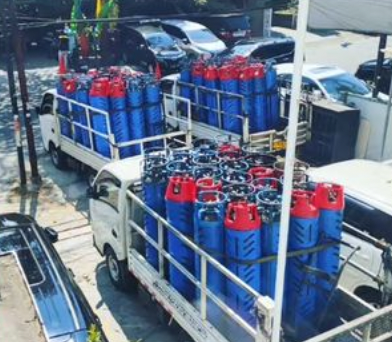CNG
CNG is an abbreviation for Compressed Natural Gas, where CNG is compressed natural gas that can be used as an alternative fuel for small and medium-sized industrial markets. CNG is distributed using Cradle and Pressure Reducing System technology that is safe and simpler, so it does not require a large area.

SMART CITIGAS
SMART CITIGAS
S : Service excellence: Superior and excellent service to customers. (Quick response, efficient problem solving & providing solutions that exceed customer expectations).
M : Monitoring - Continuous monitoring of all services and equipment provided to customers (ensuring optimal performance and early detection of potential problems).
A : Adaptability - Flexibility and ability to customize services according to customers' specific needs (offering customized solutions and being able to adapt to changes that may occur).
R: Responsiveness - Ability to respond quickly and appropriately to customer needs (ability to respond to customer complaints or requests immediately and provide prompt solutions).
T : Trustworthy - Being a partner that can be trusted by customers (consistency in service quality, reliability, and building trust through integrity and commitment).

VIDEO SMART CITIGAS
VIDEO SMART CITIGAS
The video explains the commitment of PT Citigas Energi Indonesia to provide the best service to customers through the Smart City Gas brand. It emphasizes that we are more than just an energy provider; we are a partner ready to meet customer energy needs with quick responses and effective solutions.
SMART CITIGAS by PT CITIGAS ENERGI INDONESIA
VIDEO SMART CITIGAS
The video explains the commitment of PT Citigas Energi Indonesia to provide the best service to customers through the Smart City Gas brand. It emphasizes that we are more than just an energy provider; we are a partner ready to meet customer energy needs with quick responses and effective solutions.
In the video, there is an example of interaction between a customer and the service team, where the customer reports an issue with their gas stove. The Citi Gas team promptly responds and conducts checks to ensure the equipment is functioning properly. The videoalso highlight efficiency and safety in the gas filling and distribution process, as well as real-time monitoring to ensure a smooth supply.
PT Citi Gas Energi Indonesia focuses on flexible services tailored to customer needs and is committed to providing a service experience that exceeds expectations. By using Smart City Gas, customers benefit from cost savings and convenience in their energy use for their businesses.
Comparison of CNG vs LPG vs Diesel fuel on their Gas Composition:
Comparison of CNG (Compressed Natural Gas), LPG (Liquefied Petroleum Gas), and Diesel Fuel, based on their Gas Composition:
Stand for
Type of Fuel
LPG (Liquefied Petroleum Gas)
LPG
- * Primarily consists of propane (C₃H₈) and butane (C₄H₁₀), with propane being the main component.
- * The typical composition is around 60% propane and 40% butane.
- * LPG may also contain small amounts of other gases such as ethane and propylene.
Diesel Fuel
DIESEL
- * Diesel fuel is not a gas but a liquid hydrocarbon fuel primarily derived from crude oil.
- * It consists of various hydrocarbons, including alkanes, cycloalkanes, and aromatic hydrocarbons.
- * The specific composition of diesel fuel can vary depending on its source and refining process.
- * Diesel fuel typically has a higher energy density compared to CNG and LPG due to its liquid state.
Here is a comparison between CNG (Compressed Natural Gas), LPG (Liquefied Petroleum Gas), and Diesel from various aspects, including calorific value, density, storage phase, pressure, and calculation:
Here is a comparison between CNG (Compressed Natural Gas), LPG (Liquefied Petroleum Gas), and Diesel from various aspects, including calorific value, density, storage phase, pressure, and calculation:
CNG
(Compressed Natural Gas)
* CNG: CNG has a relatively high calorific value because it mainly consists of methane (CH₄), which has a high calorific value.
More DetailsLPG
(Liquefied Petroleum Gas)
* LPG: LPG has a lower calorific value compared to CNG because it mainly consists of a mixture of propane (C₃H₈) and butane (C₄H₁₀).
Diesel
* Diesel: The calorific value of diesel fuel is usually higher than LPG but lower than CNG because it is a liquid and has a different molecular structure.